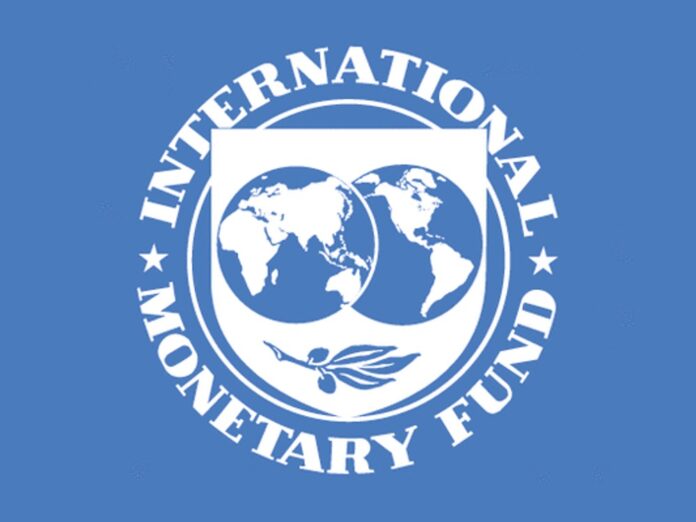
by staff writer
ROSEAU, Dominica, Apr 4, CMC – An International Monetary Fund (IMF) delegation has ended a 10-day visit to Dominica, indicating that the island’s economy grew by 3.5 percent last year and is expected to grow by more than four percent this year.
The delegation, headed by Christopher Faircloth, said that the real gross domestic growth (GDP) was supported by a recovery in tourism and targeted development investment to boost economic capacity and competitiveness.
It said inflation has eased from its 2023 peak of seven per cent, averaging 3.1 per cent in 2024 and that tourism arrivals have surpassed pre-pandemic levels by roughly 32 per cent, even as the composition has shifted towards cruise visitors over stayovers.
The IMF delegation, which ended its visit on Thursday, said that the current account (CA) deficit narrowed by two percentage points to 32¼ per cent of GDP in 2024, reflecting higher tourism receipts.
“The labour market recovery remains uneven, however, with formal employment lagging behind overall growth,” Faircloth said.
He said fiscal imbalances have narrowed, but public debt remains high and above pre-pandemic levels. The primary deficit narrowed to two per cent of GDP in the financial year 2023/24 and is projected to move into a modest surplus of 0.1 per cent of GDP in financial year 2024/25.
“This improvement reflects the impact of recent tax measures, including higher excise duties on sugary drinks, alcohol, tobacco, and diesel, and an expected moderation in capital expenditures mainly related to slow implementation rates and capacity constraints.
“While public debt has fallen in recent years after peaking at 112.5 per cent of GDP in financial year 2020/21 following successive natural disaster events and the pandemic shock, it remains high relative to its ECCU (Eastern Caribbean Currency Union) peers at around 100 per cent of GDP,” Faircloth added.
He said Dominica’s financial system is stable and liquid, with a mixed credit picture and vulnerabilities that require careful monitoring. Bank credit has declined further since 2023, reflecting ongoing de-risking amid persistent balance sheet challenges.
“Despite adequate capitalization, bank sovereign and overseas exposures remain elevated, while improvements in non-performing loans (NPLs) have been slow with levels exceeding prudential guidelines alongside still fragile provisioning.
“Meanwhile, the credit union (CU) sector is expanding its lending portfolio rapidly, despite weak capitalization, high NPLs, and limited provisioning—all of which breach supervisory thresholds in aggregate.”
Faircloth said the growing systemic importance of CUs, which now account for 53 percent of total private sector credit, highlights a need to close supervisory gaps by modernizing regulatory frameworks to better safeguard financial sector stability.
The IMF delegation leader said that Dominica’s economy is expected to continue expanding, underpinned by ongoing development investment.
“The economy is projected to grow by 4.25 per cent in 2025, supported by ongoing strategic investment in flagship infrastructure projects to boost capacity in tourism and transition to lower-cost geothermal energy.
“Growth is expected to converge towards two per cent over the longer term, as major capital projects wind down and fiscal consolidation intensifies. The CA balance is projected to improve steadily to its norm by 2028 on the back of increased tourism, a normalization of investment imports, and reduced fuel imports with the rollout of geothermal energy.”
Faircloth said the primary balance is projected to strengthen gradually to two percent of GDP by 2030 on current policies and as capital expenditures recede amid declining Citizenship by Investment (CBI) inflows, falling short of fiscal rule obligations.
Under the CBI programme, Dominica provides citizenship to foreign investors in return for making a substantial investment in the socio-economic development of the island.
Faircloth said public debt is projected to decline to 69¾ percent of GDP by 2035, yet remains at high risk of debt distress and above the prudential currency union debt benchmark.
He said risks to the outlook are elevated and tilted to the downside.
Escalating trade tensions, policy uncertainty, and commodity price volatility pose external risks to tourism, trade, and foreign direct investment (FDI). Pressure on global interest rates may lead to market losses on overseas investments, with spillovers to domestic credit and FDI.
“Extreme natural disaster shocks pose additional risks to growth. Domestically, fiscal underperformance, rising arrears, and shortfalls to expected CBI inflows could weaken economic activity, jeopardize flagship projects, exacerbate imbalances, and potentially trigger debt distress.
“Weakness in the local financial system could amplify these shocks. At the same time, better than expected growth dividends from ongoing flagship projects pose an upside risk to the long-term outlook,” said Faircloth.
He said more ambitious fiscal consolidation is needed to reduce economic imbalances and debt vulnerabilities, mitigate disaster risks, and help reinforce prospects for resilient growth.
The IMF official said the economic expansion presents an opportunity to rebuild critical fiscal buffers. These include achieving fiscal rule targets by maintaining a primary surplus of at least two per cent of GDP from 2026 onward to reduce public debt below 60 per cent of GDP by 2035 and adequately capitalising the Vulnerability, Risk and Resilience Fund (VRF) to help insure against natural disaster shocks
“Reaching these goals will require identifying an estimated EC$75 million (One EC dollar=US$0.37 cents) in cumulative fiscal consolidation measures over two years to sustain 35 per cent of GDP primary surplus from financial year 2026/27.
“The consolidation strategy should focus on improving non-CBI fiscal balances while safeguarding critical social and economic investment to protect growth and the most vulnerable.
“Stronger fiscal consolidation would help reduce debt vulnerabilities and the financial sector’s exposure to the public sector, and also facilitate external rebalancing thereby reducing external vulnerabilities.”
Faircloth said a multipronged strategy is recommended to broaden revenues and rationalize expenditures to preserve vital social and economic investments for resilient growth.
He said revenue mobilization should build on recent initiatives to reduce the reliance on CBI inflows, including rationalizing tax incentives to curb leakage, enhancing VAT yields via a rate adjustment, pursuing levies on tourism and highways, introducing a solid waste fee, and improving tax administration and compliance.
He said on the expenditure side, exploiting further efficiencies in goods and services spending while sustaining restraint in wages are priorities.
A reprioritization of expenditure outlays is also essential, including revamping the National Employment Program (NEP) into a revolving skills training programme to alleviate skills gaps within the economy and recalibrating the housing program to provide support on a need’s basis through means-testing and with cost recovery mechanisms.
“Additionally, tariff adjustments on key public services should be pursued, thus reducing government transfers and contingent liability risks,” Faircloth said.
CMC/ad/ir/2025


While Fontaine, Linton, et al were predicting doom and gloom. Go figure!